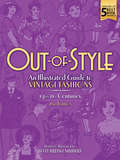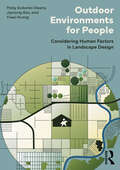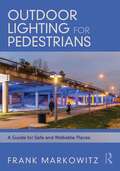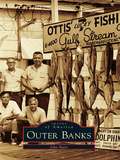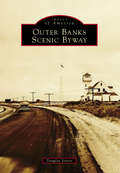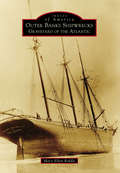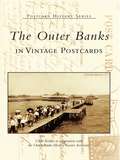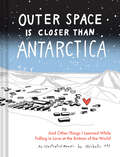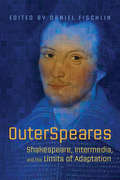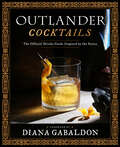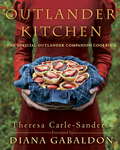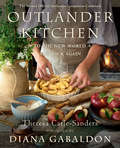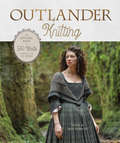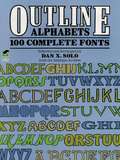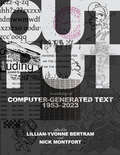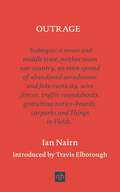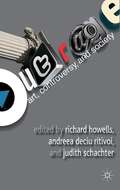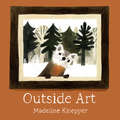- Table View
- List View
Out-of-Style: An Illustrated Guide to Vintage Fashions
by Betty Kreisel Shubert"This is one of the most valued 'go to' books in my library with talking points new, even to me." — Alyja Kalinich, Disneyland Costume DesignerWinner of 5 Best Book Awards:• 2016 Hollywood Book Festival Awards: History• 2015 Beverly Hills International Book Awards: Performing Arts, Film & Theater• 2014 USA Best Book Awards: Performing Arts, Film & Theater• 2014 Family Tree Magazine UK: "Our Top Choice"• 2013 Kirkus Reviews: Best BooksThis volume of style clues for fashion detectives weaves fascinating elements of social history into tales of how, why, and when fashions evolved. Hundreds of sequential illustrations highlight the style flourishes that identify garments for men, women, and children as products of their individual periods. The images are accompanied by highly readable — and often humorous — comments and explanations by author and illustrator Betty Kreisel Shubert. A noted fashion historian, Ms. Shubert is a columnist for Ancestry Magazine and has designed clothes and costumes for stage and screen as well as hotels, restaurants, and casinos all over the world.Ranging decade by decade from the nineteenth through twentieth centuries, this book offers a simple way to date photographs and clothing. It also provides background that makes less-accessible histories of costume easier to understand. This second edition, enhanced with a selection of new photographs, offers a valuable resource for costumers, vintage fashion enthusiasts, social historians, genealogists, and collectors of nostalgia items. The easy-to-follow format makes it a great browsing book even for those who are unversed in fashion design and history."A great reference book. I can't wait to put it to use!" — Maureen Taylor, The Photo Detective"Fascinating! I couldn't put it down. The author shows how social development influenced how we dress. I would certainly include this book in my theater classes for its value to future costumers, directors, and actors." — Allen M. Zeltzer, Professor of Theater, Emeritus, Cal-State University at Fullerton
Outdoor Action and Adventure Photography
by Dan BaileyThe difference between getting the shot and missing the shot comes down to split seconds and how you manage your gear and your technique. In Outdoor Action and Adventure Photography professional adventure sports photographer Dan Bailey shows readers how to react quickly to unfolding scenes and anticipate how the subject and the background might converge. Capturing those significant moments to produce powerful imagery that evoke the feel and mood of adventure requires specialized skills and a wide variety of creative ideas. This book teaches photographers how to think geometrically and how to pull together the elements that make for a successful shot, all while being immersed in the action. The practical manual will improve your technique for creating more compelling adventure imagery, whether you’re shooting ultra-marathoners splattered in mud, rock climbers in a crevasse, or mountain bikers hurtling past you. In this book, you’ll: • Discover the necessary equipment for shooting action, learn how to use it to its full potential, and develop a comprehensive adventure photography camera system that you can adapt to different shooting situations. • Learn specific techniques and creative ideas that help you freeze the moment and create images that convey excitement, mood, and the feel of adventure. • Learn advanced skills that can help you start defining your own particular style of action photography and create a "brand" of photography that’s based around your passion and your vision. • Examine case studies that break down the process for shooting different types of action subjects and see the nuts and bolts of how to create powerful imagery from start to finish.
Outdoor Environments for People: Considering Human Factors in Landscape Design
by Patsy Eubanks Owens Jayoung Koo Yiwei HuangOutdoor Environments for People addresses the everyday human behavior in outdoor built environments and explains how designers can learn about and incorporate their knowledge into places they help to create. Bridging research and practice, and drawing from disciplines such as environmental psychology, cultural geography, and sociology, the book provides an overview of theories, such as personal space, territoriality, privacy, and place attachment, that are explored in the context of outdoor environments and, in particular, the landscape architecture profession. Authors share the impact that place design can have on individuals and communities with regard to health, safety, and belonging. Beautifully designed and highly illustrated in full color, this book presents analysis, community engagement, and design processes for understanding and incorporating the social and psychological influences of an environment and discusses examples of outdoor place design that skillfully respond to human factors. As a textbook for landscape architecture students and a reference for practitioners, it includes chapters addressing different realms of people–place relationships, examples of theoretical applications, case studies, and exercises that can be incorporated into any number of design courses. Contemporary design examples, organized by place type and illustrating key human factor principles, provide valuable guidance and suggestions. Outdoor Environments for People is a must-have resource for students, instructors, and professionals within landscape architecture and the surrounding disciplines.
Outdoor Flash Photography
by John Gerlach Barbara EddyMaximizing the power of your camera’s flash is difficult enough in a studio set-up, but outdoors literally presents a whole new world of challenges. John Gerlach and Barbara Eddy have taken the most asked about subject from their renowned photography workshops and turned it into this guidebook that is sure to inspire your next outdoor shoot, while also saving you time and frustration. Outdoor Flash Photography covers a range of practices from portrait to landscape, including unique strategies that the authors have pioneered through 40 years in the field. Mastering the use of multiple flashes to freeze action is shown through one of most challenging subjects in nature, hummingbirds in flight. This book will benefit photographers of all experience levels who are eager to evolve their outdoor photography and get the most out of their equipment.
Outdoor Lighting for Pedestrians: A Guide for Safe and Walkable Places
by Frank MarkowitzOutdoor Lighting for Pedestrians shows how outdoor lighting is important for pedestrians’ safety, personal security, and comfort, with major impacts on street, path, and park aesthetics and neighborhood sense of place. Providing clear, basic technical background (accessible to non-engineers), the book focuses especially on planning and policy concerns. It covers the fundamentals of lighting technology; benefits, costs, and possible adverse impacts of lighting enhancements; traditional and innovative approaches; planning and policy documents and practices; aesthetics and placemaking; and technology trends in lighting design. This book is aimed primarily at practicing transportation planners and engineers, generalist urban planners, safety advocates and researchers, and university students. However, lighting designers and other professionals will also find it useful. It considers how lighting can be coordinated with other potential improvements to enhance the pedestrian environment for better walkability.
Outer Banks
by John HairrAdestination for many tourists eager for sun, sand, and a simpler way of life, and a far distant cry from the glitter and neon of more traditional, commercial oriented beaches, the Outer Banks of North Carolina is a natural wonder sheltering and buffering Eastern North Carolina from the volatile temperament of the Atlantic Ocean. Even before the official birth of North Carolina and into thetwenty-first century, this coastal strip of barrier islands has played an important role in the state's and nation's history, from the mysterious and tragic disappearance of the Lost Colony on Roanoke Island to its strategic importance during the Civil War and World War II to today, serving as a friendly haven for visitors worldwide. Outer Banks, with over 180 images, many seen here for the first time, is afascinating visual history, allowing the reader to explore the many different facets of life throughout the region. This volume is full of captivating scenes of early fishermen, both professional and amateur, proudly displaying their successful catches of the day; photographs of North Carolina's most famous aerial pioneers, the Wright Brothers, and their early experimental flying machines; views of many long-forgotten life saving stations, homes to countless brave volunteers who patrolled these turbulent waters, risking their own lives to save hundreds of sailors and passengers when their ships were in distress; and scenes of the Outer Banks' most notable and visible landmarks, its beautiful lighthouses, such as Cape Hatteras and Bodie Island.
Outer Banks Scenic Byway (Images of America)
by Douglas StoverThe Outer Banks National Scenic Byway stretches the length of North Carolina's 200-mile barrier islands. The unique maritime culture shared by the 21 coastal villages led to the road's designation as a National Scenic Byway in 2009. The route is entered from the north at Whalebone Junction in Nags Head, North Carolina, and from the south at the North River Bridge on US 70 East, just past Beaufort, North Carolina. Encompassing 142.5 driving miles, six and a half hours of travel time, and two ferries, the byway traverses Hatteras Island, Ocracoke, and Down East in Dare County and Hyde and Carteret Counties. This book explores the region's rich maritime history, culture, and traditions, such as boatbuilding, decoy carving, fishing, lighthouse-keeping, and living with the powerful forces of water and wind. Travelers can experience local seafood, ascend three lighthouses, and discover outdoor trails and endless miles of marsh and beaches offering bird-watching and solitude.
Outer Banks Shipwrecks: Graveyard of the Atlantic (Images of America)
by Mary Ellen RiddleEver since ships began navigating the coast of North Carolina, the area has maintained a reputation for being dangerous. Today, the region that stretches from the Currituck Outer Banks south to Bogue Banks is referred to as the “Graveyard of the Atlantic.” From the 1585 grounding of the English ship Tiger off the Outer Banks to the 2012 loss of the Bounty, more than 2,000 shipwrecks have occurred in the Graveyard of the Atlantic. Weather, geography, war, piracy, and human error have all contributed to this dense shipwreck zone. The stories behind the shipwrecks illustrate the best and worst of mankind, showing courage and compassion as well as the atrocities of war. This history informs readers about commerce, technology, war, environment, maritime life, and the complexity of the human element.
Outer Banks in Vintage Postcards, The (Postcard History)
by Outer Banks History Center Associates Chris KidderThe Outer Banks of North Carolina have been a destination for seasonal visitors since Algonkian Indians hunted and fished on the islands. In 1584, English explorers arrived and before long were promoting the area as a land of natural abundance and beauty, pleasant weather, and kindly natives. Not much has changed in that respect. By the beginning of the 20th century, visitors and residents alike were using postcards to share the things that make the Outer Banks unique with family and friends in other places.
Outer Space Is Closer Than Antarctica: And Other Things I Learned While Falling in Love at the Bottom of the World
by Michelle OttThis beautifully illustrated memoir tells artist Michelle Ott’s true story of falling in love and discovering her place in the universe on a remote research station in Antarctica.In 2004, feeling burned out and dissatisfied, Michelle Ott left her high-profile gallery job in New York to work as a janitor at McMurdo Station in Antarctica: the coldest, windiest, driest place on Earth. There, she fell in love—not only with her future partner, but with the raw, inhospitable, incomparable beauty of the continent itself. She took trips to nowhere on the Antarctic ice and mapped out the most romantic date locations on a remote research base where the sun never sets. She witnessed the bright green aurora australis at -30°F, cried in response to its beauty, and found her eyes frozen shut by her tears. She learned about (literally) breathtaking katabatic winds, ventifacts, and what it was like to bake cookies for 1000. She dropped a piece of glacier ice into a glass of booze and consumed the ancient air bubbles that were trapped within it. In this emotional blend of art, science, and deeply personal stories, Ott shares the wisdom and wonder gleaned from her four trips to the southernmost continent. Complete with hand-drawn maps and diagrams, accessible scientific explanations, and the realizations that can only come from turning your life upside down, Outer Space Is Closer Than Antarctica is an ode to explorers and dreamers, scientists and artists, and anyone curious enough to brave the unknown.FOR THE EXPLORER AND THE DREAMER: Who hasn't fantasized about quitting their job, leaving city life behind, and running away to the wilderness? We might not all choose Antarctica as our dream destination, but Michelle Ott's brave, open-hearted approach to life still speaks to that nagging impulse to flip your world upside down. Her story of finding friendship, love, and an appreciation for life's simplest joys reminds us that sometimes that impulse is worth acting on. ART + SCIENCE: This well-researched memoir presents scientific principles and research in an engaging combination of art and prose. Learn about volcanoes, stardust, Katabatic winds, the polar vortex, ventifacts, glaciers, and other Antarctic phenomena through Ott’s illustrations, maps, diagrams, and descriptions. THE WONDER OF ANTARCTICA: Antarctica is a place of superlatives—driest, highest, coldest, windiest, biggest—and extremes. Its closest continental neighbor is 774 miles away. The Kármán line, the boundary between Earth’s atmosphere and outer space, is only 62 miles above sea level. When you are standing on any other landmass on Earth, you are nearer to outer space than to Antarctica. Science enthusiasts, creative thinkers, and armchair travelers will all find something to relish in this remarkable volume.Perfect for: Fans of illustrated nonfiction and memoirs Anyone who’s ever daydreamed about moving away from the city and starting fresh Designers, artists, visual thinkers, and other creatives Adults and teens who are curious about geology, geography, and earth sciences Scientists, researchers, and environmentalists Fans of introspective nature writing and authors like Katherine May and Helen Macdonald Romantics and readers who enjoy unconventional love stories
OuterSpeares
by Daniel FischlinFor Shakespeare and Shakespearean adaptation, the global digital media environment is a "brave new world" of opportunity and revolution. In OuterSpeares: Shakespeare, Intermedia, and the Limits of Adaptation, noted scholars of Shakespeare and new media consider the ways in which various media affect how we understand Shakespeare and his works.Daniel Fischlin and his collaborators explore a wide selection of adaptations that occupy the space between and across traditional genres - what artist Dick Higgins calls "intermedia" - ranging from adaptations that use social networking, cloud computing, and mobile devices to the many handicrafts branded and sold in connection with the Bard.With essays on YouTube and iTunes, as well as radio, television, and film, OuterSpeares is the first book to examine the full spectrum of past and present adaptations, and one that offers a unique perspective on the transcultural and transdisciplinary aspects of Shakespeare in the contemporary world.
Outlander Cocktails: The Official Drinks Guide Inspired by the Series (Outlander)
by James Shy Freeman Rebeccah MarstersTravel back in time with Claire and Jamie, drinking—and eating—your way through their adventures from the Scottish Highlands to the New World in this gorgeous book featuring 90 recipes for cocktails, nonalcoholic offerings, and plenty of bar bites.Grab your cocktail shaker and dive into Outlander Cocktails!Whether you&’re just learning to make cocktails at home, looking for creative ways to expand your cocktail knowledge, or throwing an Outlander watch party, this book will be your perfect guide.Inspired by Diana Gabaldon&’s wildly popular book series, Outlander Cocktails presents the historical perspective on drinking culture in the eighteenth and twentieth centuries as well as the origins of different spirits such as scotch, whiskey, rum, and ale. You&’ll find:• Thorough background pertaining to each type of spirit involved.• Drinks organized by category such as aperitifs, spirit-forward, after-dinner, and nonalcoholic options.• 75 cocktail recipes inspired by the series and by history, like the Bobby Burns and Angelus Bells and the Brandy and Splash that Claire and Roger first drank at the pub at Inverness, plus modern drinks like Collecting the Rents and Pink Linen Gown.• 15 recipes for food pairings, like Deviled Scotch Eggs, Crispy Fish Cakes with Saffron Aioli, and Chocolate Almond Shortbread.Outlander Cocktails offers something for any fan who wants to spend more time in the rich world of Outlander, drinking and eating with everyone&’s favorite Highlanders.
Outlander Kitchen: The Official Outlander Companion Cookbook
by Theresa Carle-SandersTake a bite out of Diana Gabaldon's New York Times bestselling Outlander novels, the inspiration for the hit Starz series, with this immersive official cookbook from OutlanderKitchen.com founder Theresa Carle-Sanders! Claire Beauchamp Randall's incredible journey from postwar Britain to eighteenth-century Scotland and France is a feast for all five senses, and taste is no exception. From Claire's first lonely bowl of porridge at Castle Leoch to the decadent roast beef served after her hasty wedding to Highland warrior Jamie Fraser, from gypsy stew and jam tarts to fried chicken and buttermilk drop biscuits, there are enough mouth-watering meals along the way to whet the appetite of even the most demanding palate. Now professional chef and founder of OutlanderKitchen.com Theresa Carle-Sanders offers up this extraordinary cuisine for your table. Featuring more than one hundred recipes, Outlander Kitchen retells Claire and Jamie's incredible story through the flavors of the Scottish Highlands, the French Revolution, and beyond. Following the high standards for prodigious research and boundless creativity set by Diana Gabaldon herself, Carle-Sanders draws on the events and characters of the novels to deliver delicious and inventive dishes that highlight local ingredients and traditional cooking techniques. Yet amateur chefs need not fear: These doable, delectable recipes have been updated for today's modern kitchens. Here are just a few of the dishes that will keep the world of Outlander on your mind morning, noon, and nicht: * Breakfast: Yeasted Buckwheat Pancakes; A Coddled Egg for Duncan; Bacon, Asparagus, and Wild Mushroom Omelette * Appetizers: Cheese Savories; Rolls with Pigeons and Truffles; Beer-Battered Corn Fritters * Soups & Stocks: Cock-a-Leekie Soup; Murphy's Beef Broth; Drunken Mock-Turtle Soup * Mains: Peppery Oyster Stew; Slow-Cooked Chicken Fricassee; Conspirators' Cassoulet * Sides: Auld Ian's Buttered Leeks; Matchstick Cold-Oil Fries; Honey-Roasted Butternut Squash * Bread & Baking: Pumpkin Seed and Herb Oatcakes; Fiona's Cinnamon Scones; Jocasta's Auld Country Bannocks * Sweets & Desserts: Black Jack Randall's Dark Chocolate Lavender Fudge; Warm Almond Pastry with Father Anselm; Banoffee Trifle at River Run With full-color photographs and plenty of extras--including cocktails, condiments, and preserves--Outlander Kitchen is an entertainment experience to savor, a wide-ranging culinary crash course, and a time machine all rolled into one. Forget bon appétit. As the Scots say, ith do leòr!From the Hardcover edition.
Outlander Kitchen: The Official Outlander Companion Cookbook
by Theresa Carle-SandersTake a bite out of Diana Gabaldon's New York Times bestselling Outlander novels, the inspiration for the hit Starz series, with this immersive official cookbook from OutlanderKitchen.com founder Theresa Carle-Sanders! Claire Beauchamp Randall's incredible journey from postwar Britain to eighteenth-century Scotland and France is a feast for all five senses, and taste is no exception. From Claire's first lonely bowl of porridge at Castle Leoch to the decadent roast beef served after her hasty wedding to Highland warrior Jamie Fraser, from gypsy stew and jam tarts to fried chicken and buttermilk drop biscuits, there are enough mouth-watering meals along the way to whet the appetite of even the most demanding palate. Now professional chef and founder of OutlanderKitchen.com Theresa Carle-Sanders offers up this extraordinary cuisine for your table. Featuring more than one hundred recipes, Outlander Kitchen retells Claire and Jamie's incredible story through the flavors of the Scottish Highlands, the French Revolution, and beyond. Following the high standards for prodigious research and boundless creativity set by Diana Gabaldon herself, Carle-Sanders draws on the events and characters of the novels to deliver delicious and inventive dishes that highlight local ingredients and traditional cooking techniques. Yet amateur chefs need not fear: These doable, delectable recipes have been updated for today's modern kitchens. Here are just a few of the dishes that will keep the world of Outlander on your mind morning, noon, and nicht: * Breakfast: Yeasted Buckwheat Pancakes; A Coddled Egg for Duncan; Bacon, Asparagus, and Wild Mushroom Omelette * Appetizers: Cheese Savories; Rolls with Pigeons and Truffles; Beer-Battered Corn Fritters * Soups & Stocks: Cock-a-Leekie Soup; Murphy's Beef Broth; Drunken Mock-Turtle Soup * Mains: Peppery Oyster Stew; Slow-Cooked Chicken Fricassee; Conspirators' Cassoulet * Sides: Auld Ian's Buttered Leeks; Matchstick Cold-Oil Fries; Honey-Roasted Butternut Squash * Bread & Baking: Pumpkin Seed and Herb Oatcakes; Fiona's Cinnamon Scones; Jocasta's Auld Country Bannocks * Sweets & Desserts: Black Jack Randall's Dark Chocolate Lavender Fudge; Warm Almond Pastry with Father Anselm; Banoffee Trifle at River Run With full-color photographs and plenty of extras--including cocktails, condiments, and preserves--Outlander Kitchen is an entertainment experience to savor, a wide-ranging culinary crash course, and a time machine all rolled into one. Forget bon appétit. As the Scots say, ith do leòr!From the Hardcover edition.
Outlander Kitchen: The Official Outlander Companion Cookbook
by Theresa Carle-SandersTake a bite out of Diana Gabaldon’s New York Times bestselling Outlander novels, the inspiration for the hit Starz series, with this immersive official cookbook from OutlanderKitchen.com founder Theresa Carle-Sanders! Claire Beauchamp Randall’s incredible journey from postwar Britain to eighteenth-century Scotland and France is a feast for all five senses, and taste is no exception. From Claire’s first lonely bowl of porridge at Castle Leoch to the decadent roast beef served after her hasty wedding to Highland warrior Jamie Fraser, from gypsy stew and jam tarts to fried chicken and buttermilk drop biscuits, there are enough mouth-watering meals along the way to whet the appetite of even the most demanding palate. Now professional chef and founder of OutlanderKitchen.com Theresa Carle-Sanders offers up this extraordinary cuisine for your table. Featuring more than one hundred recipes, Outlander Kitchen retells Claire and Jamie’s incredible story through the flavors of the Scottish Highlands, the French Revolution, and beyond. Following the high standards for prodigious research and boundless creativity set by Diana Gabaldon herself, Carle-Sanders draws on the events and characters of the novels to deliver delicious and inventive dishes that highlight local ingredients and traditional cooking techniques. Yet amateur chefs need not fear: These doable, delectable recipes have been updated for today’s modern kitchens. Here are just a few of the dishes that will keep the world of Outlander on your mind morning, noon, and nicht: • Breakfast: Yeasted Buckwheat Pancakes; A Coddled Egg for Duncan; Bacon, Asparagus, and Wild Mushroom Omelette • Appetizers: Cheese Savories; Rolls with Pigeons and Truffles; Beer-Battered Corn Fritters • Soups & Stocks: Cock-a-Leekie Soup; Murphy’s Beef Broth; Drunken Mock-Turtle Soup • Mains: Peppery Oyster Stew; Slow-Cooked Chicken Fricassee; Conspirators’ Cassoulet • Sides: Auld Ian’s Buttered Leeks; Matchstick Cold-Oil Fries; Honey-Roasted Butternut Squash • Bread & Baking: Pumpkin Seed and Herb Oatcakes; Fiona’s Cinnamon Scones; Jocasta’s Auld Country Bannocks • Sweets & Desserts: Black Jack Randall’s Dark Chocolate Lavender Fudge; Warm Almond Pastry with Father Anselm; Banoffee Trifle at River Run With full-color photographs and plenty of extras—including cocktails, condiments, and preserves—Outlander Kitchen is an entertainment experience to savor, a wide-ranging culinary crash course, and a time machine all rolled into one. Forget bon appétit. As the Scots say, ith do leòr!From the Hardcover edition.
Outlander Kitchen: The Second Official Outlander Companion Cookbook
by Theresa Carle-SandersSink your teeth into over 100 new easy-to-prepare recipes inspired by Diana Gabaldon&’s beloved Outlander and Lord John Grey series, as well as the hit Starz original show—in the second official cookbook from Outlander Kitchen founder Theresa Carle-Sanders!&“If you thought Scottish cuisine was all porridge and haggis washed down with a good swally of whiskey, Outlander Kitchen&’s here to prove you wrong.&”—Entertainment WeeklyWith the discovery of a New World comes an explosion of culinary possibilities. The later novels in Diana Gabaldon&’s Outlander series and the Lord John Grey series have Jamie, Claire, Lord John, and friends embark on their revolutionary adventures across the Atlantic and back again—and with their voyages come hundreds of new mouthwatering flavors to entice the taste buds of even the most discerning palates.Professional chef and founder of Outlander Kitchen, Theresa Carle-Sanders returns with another hallmark cookbook—one that dexterously adapts traditional recipes for hungry, modern appetites. Interpreted with a spirit of generous humor and joyous adventure, the recipes herein are a mixture of authentic old-worldreceipts from Scottish settlers, new-world adaptations inspired by the cuisine of indigenous peoples, and humorously delicious character-inspired dishes—all created to satisfy your hunger and insatiable craving for everything Outlander, and with the modern kitchen in mind:• Breakfast: Mrs. Figg&’s Flapjacks; Simon Fraser&’s Grits with Honey• Soups: Leek and Potato Soup with Harry Quarry; Annie MacDonald&’s Chicken Noodle Soup• Appetizers: Cheese Savories; Sardines on Toast for Lady Joffrey• Mains: Benedicta&’s Steak and Mushroom Pie; The Cheerful Chicken&’s Poulet au MielPork Tenderloin with Cider Sauce and German Fried Potatoes; Claire&’s Beans and Sass • Sides: Tobias Quinn&’s Colcannon; Fried Plantains; Corn Bread and Salt Pork Stuffing• Breads: John Grey&’s Yorkshire Pudding; Corn Bread; Scones with Preserved Lemon• Sweets: Mistress Abernathy&’s Apple Pandowdy; Oliebollen; Almond BiscuitsWith vivid, full-color photographs and a plethora of extras—including preserves, condiments, cocktails, and pantry basics—Outlander Kitchen: To the New World and Back Again is the highly anticipated follow-up to the immersive culinary experience that inspired thousands of Outlander fans to discover and embrace their inner chefs! Ith gu leòir! Or, bon appétit!
Outlander Knitting: The Official Book of 20 Knits Inspired by the Hit Series (Outlander)
by Kate AtherleyFeel the magic of Outlander at your fingertips with this officially licensed book of knitting: twenty patterns inspired by the hit series from STARZ and Sony Pictures Television, based on Diana Gabaldon's bestselling novels. From the Scottish Highlands to the courts of Versailles to the eastern shores of North America, the TV show Outlander brings to life in gorgeous detail the epic love story of Jamie Fraser and Claire Beauchamp Randall Fraser. But beyond the drama and passion, what has captured fans&’ imagination the most are the rustic knits worn on the show. Now knitters of all skill levels can recreate them with twenty projects for apparel, accessories, and home décor that take inspiration from memorable episodes. Knit the capelet cowl that Mrs. Fitz gives to Claire at Castle Leoch, warm your feet with Clan Mackenzie Boot Socks, swaddle your bairn with the Mo Chridhe Baby Blanket, and dress your Jamie in a warm waistcoat. From chunky knits to Celtic cables, each project includes a clearly written pattern, gorgeous photography, and scenes from the set. A love letter to the fans, Outlander Knitting will have you wishing you could time travel to the Highlands.
Outline Alphabets: 100 Complete Fonts (Lettering, Calligraphy, Typography)
by Dan X. SoloHere's an attractive treasury of alphabets that provides graphic artists with sources of design opportunities. For his latest collection of new and imaginative typefaces, typographer and type historian Dan Solo has compiled an impressive volume of eye-catching, versatile, and royalty-free outline alphabet styles.Reproduced here in sharp black-and-white are 100 complete fonts, featuring expressive faces in a variety of styles: Art Nouveau, Art Deco, Victorian, contemporary, and many more. Included are the stately Albertus Outline, the classic Bauhaus Outline, charming Gill Floriated, and exotic Mandarin Outline, the stark and simple Ben Franklin Open, the commanding Normandie Open, appealing Washington Outline, and the optically engrossing Pluto Outline.Most fonts include both upper- and lower-case letters; many also feature numbers and punctuation marks. And equally important, the inexpensive, attention-getting letters are ready for immediate use on signs and posters, in newsletters, and countless other graphic projects.
Outlooks: Lesbian and Gay Sexualities and Visual Cultures
by Reina Lewis Peter HorneOutlook explores the relationship of lesbian and gay sexualities to visual representation. It reflects the richness of lesbian and gay ways of producing and reading visual cultures, at the same time as it tackles such burning issues as the advantage of adopting a queer perspective on past art, the responses of lesbian and gay artists to the AIDS crisis, and society's attempts to censor homosexual art. This volume provides a space for lesbian and gay artists to exhibit their work and discuss its relationship to sexuality. It allows for a wide ranging theoretical and historical discussion of the place of lesbian and gay men within visual cultures and shows how much has been missed by a heterosexist approach to art history and the study of culture. Richly illustrated, this book includes statements by contemporary lesbian and gay artists, photographers and performers as well as articles by art historians, cultural theorists and lesbians and gay activists.
Output: An Anthology of Computer-Generated Text, 1953–2023
by Nick Montfort Lillian-Yvonne BertramAn anthology of seven decades of English-language outputs from computer generation systems, chronicling the vast history of machine-written texts created long before ChatGPT.The discussion of computer-generated text has recently reached a fever pitch but largely omits the long history of work in this area—text generation, as it happens, was not invented yesterday in Silicon Valley. This anthology, Output, thoughtfully selected, introduced, and edited by Lillian-Yvonne Bertram and Nick Montfort, aims to correct that omission by gathering seven decades of English-language texts produced by generation systems and software. The outputs span many different types of creative writing and include text generated by research systems, along with reports and utilitarian texts, representing many general advances and experiments in text generation.Output is first and foremost a collection of outputs to be encountered by readers. In addition to an overall introduction, each of the excerpts is introduced individually and organized by fine-grain genre including conversations, humor, letters, poetry, prose, and sentences. Bibliographic references allow readers to learn more about outputs and systems that intrigue them. Although Output could serve as a reference book, it is designed to be readable and to be read. Purposefully excluded are human–computer collaborations that were conceptually defined but not implemented as a computer system.Copublished by Counterpath Press
Outrage
by Ian NairnAcclaimed architectural critic Ian Nairn's masterpiece, reissued for the first time since 1955.In June of 1955, The Architectural Review (Britain's most acclaimed and well-read magazine of architectural criticism) published a special issue featuring one essay called Outrage by Ian Nairn. As one of Britain&’s most famously opinionated (and untrained) architectural critics, it came as no surprise that the issue opened with a prophecy of doom: &“that if what is called development is allowed to multiply at the present rate,&” then all can be expected is the subsequent loss of the individuality and spirit of Britain&’s natural, and urban, landscapes.Nairn coined this phenomenon &“Subtopia&” and demonstrated it, throughout the issue, with mugshots of offending lampposts, arterial roads, and garrotted trees. For the first time in North America and the first time in decades in the UK, Nairn&’s influential essay is newly available, now in a handsome volume complete with the original images.
Outrage: Art, Controversy, and Society
by Andreea Deciu Ritivoi Judith Schachter Richard HowellsA study of controversy in the arts, and the extent to which such controversies are socially rather than just aesthetically conditioned. The collection pays special attention to the vested interests and the social dynamics involved, including class, religion, culture, and - above all - power.
Outrage: The Arts and the Creation of Modernity
by Katherine GiuffreA cultural revolution in England, France, and the United States beginning during the time of the industrial and political revolutions helped usher in modernity. This cultural revolution worked alongside the better documented political and economic revolutions to usher in the modern era of continuous revolution. Focusing on the period between 1847 and 1937, the book examines in depth six of the cultural "battles" that were key parts of this revolution: the novels of the Brontë sisters, the paintings of the Impressionists, the poetry of Emily Dickinson, the Ballets Russes production of Le Sacre du printemps, James Joyce's Ulysses, and Zora Neale Hurston's Their Eyes Were Watching God. Using contemporaneous reviews in the press as well as other historical material, we can see that these now-canonical works provoked outrage at the time of their release because they addressed critical points of social upheaval and transformation in ways that engaged broad audiences with subversive messages. This framework allows us to understand and navigate the cultural debates that play such an important role in 21st century politics.
Outrages: Sex, Censorship, and the Criminalization of Love
by Naomi WolfOutrages: Sex, Censorship, and the Criminalization of Love
Outside Art
by Madeline KloepperJoin a curious pack of woodland animals as they try to understand what art is and create their own in this beautiful, playful picture book.Pine Marten loves watching Human doing peculiar things in its log nest in the woods. One day, she notices Human putting colors on a board using a furry stick. Pine Marten learns from Chickadee that Human is actually "an artist" and is busy "making art." But what is art? Soon all of the animals in the forest are wondering: why is Human doing this? Is it a warning? Is it looking for a mate? Is there any meaning at all? And if Human can make "art," why can't the animals do it too?Outside Art is a gorgeous and gently humorous exploration of art, creativity and nature by up-and-coming author-illustrator Madeline Kloepper.
